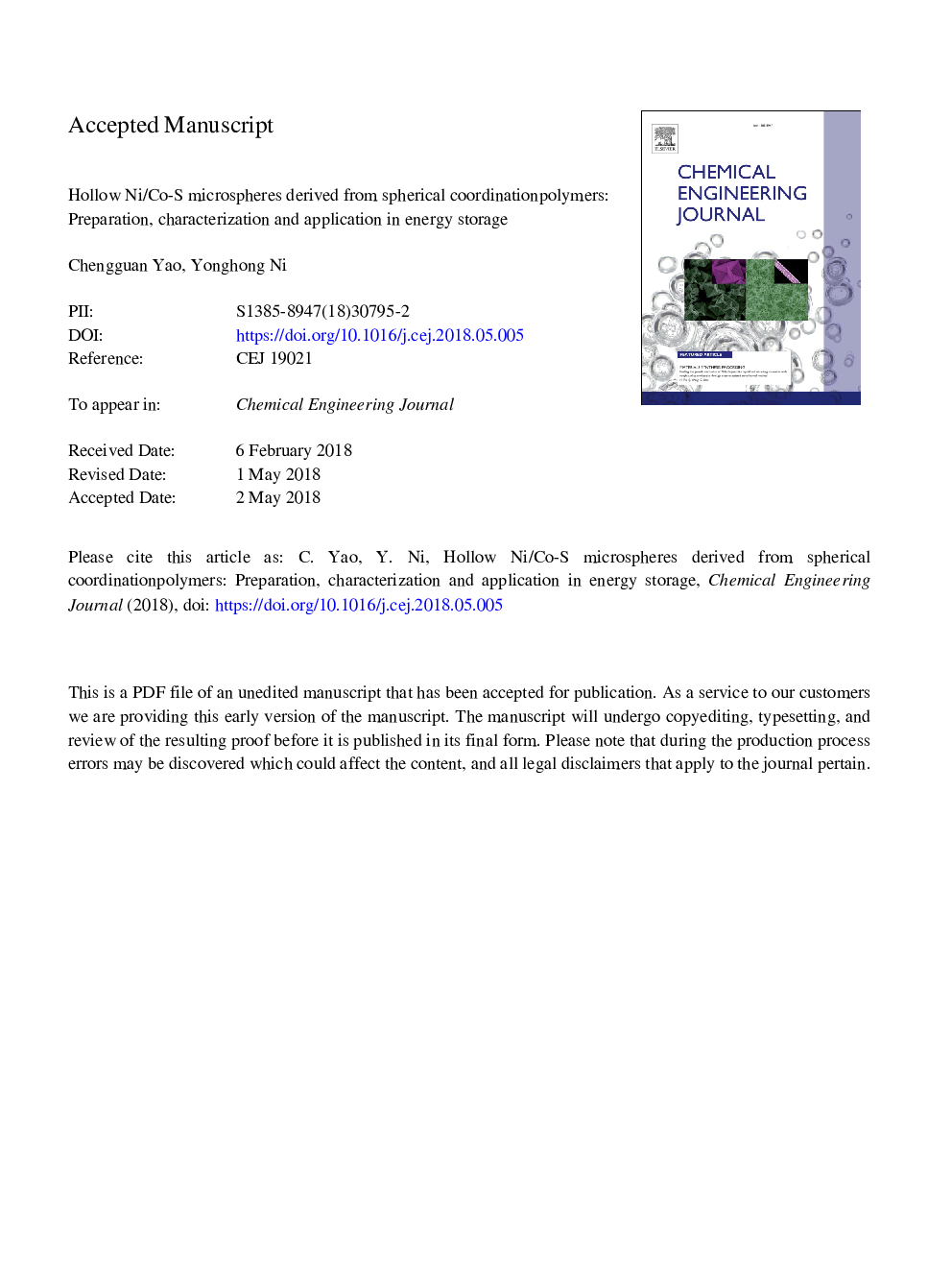| Article ID | Journal | Published Year | Pages | File Type |
|---|---|---|---|---|
| 6579043 | Chemical Engineering Journal | 2018 | 21 Pages |
Abstract
Hollow Ni/Co-S microspheres prepared through a precursor sulfuration route were reported here. The precursor was first generated at 150â¯Â°C for 24â¯h by a solvothermal process, employing Ni(NO3)2, Co(NO3)2 and 1,3,5-Benzenetricarboxylic acid (BTC) as the original reactants, and ethylene glycol (EG) as the solvent. Then, the precursor was sulfurized in a water-EG mixed solvent at 180â¯Â°C for 18â¯h to form hollow Ni/Co-S microspheres. The as-obtained product was characterized by FESEM, TEM, XRD, IR, XPS, and EDS mapping. It was found that the electrochemical properties of hollow Ni/Co-S microspheres strongly depended on the original molar ratio of Ni2+/Co2+. The product prepared from the system with the Ni2+/Co2+ molar ratio of 2:1 (labeled as 2Ni-Co-S) exhibited the best electrochemical performances. At a current density of 1â¯Aâ¯gâ1, the specific capacitance of 2Ni-Co-S reached 1397â¯mAhâ¯gâ1; and even at a current density of 10â¯Aâ¯gâ1, the specific capacitance still reached 908â¯mAhâ¯gâ1. After 2000 cycles, the specific capacitance still retained â¼114% of the initial value and â¼76.0% of the biggest capacitance, exhibiting excellent cycling stability. Also, a hybrid battery assembled with 2Ni-Co-S and activated carbon owned the energy density of 178.97â¯Whâ¯kgâ1 at a power density of 1.96â¯kWâ¯kgâ1; and even at a power density of 9.3â¯kWâ¯kgâ1, the energy density still achieved 148.4â¯Whâ¯kgâ1, indicating that the as-obtained hollow Ni/Co-S microspheres have potential applications for energy storage as high performance electrode materials.
Keywords
Related Topics
Physical Sciences and Engineering
Chemical Engineering
Chemical Engineering (General)
Authors
Chengguan Yao, Yonghong Ni,
